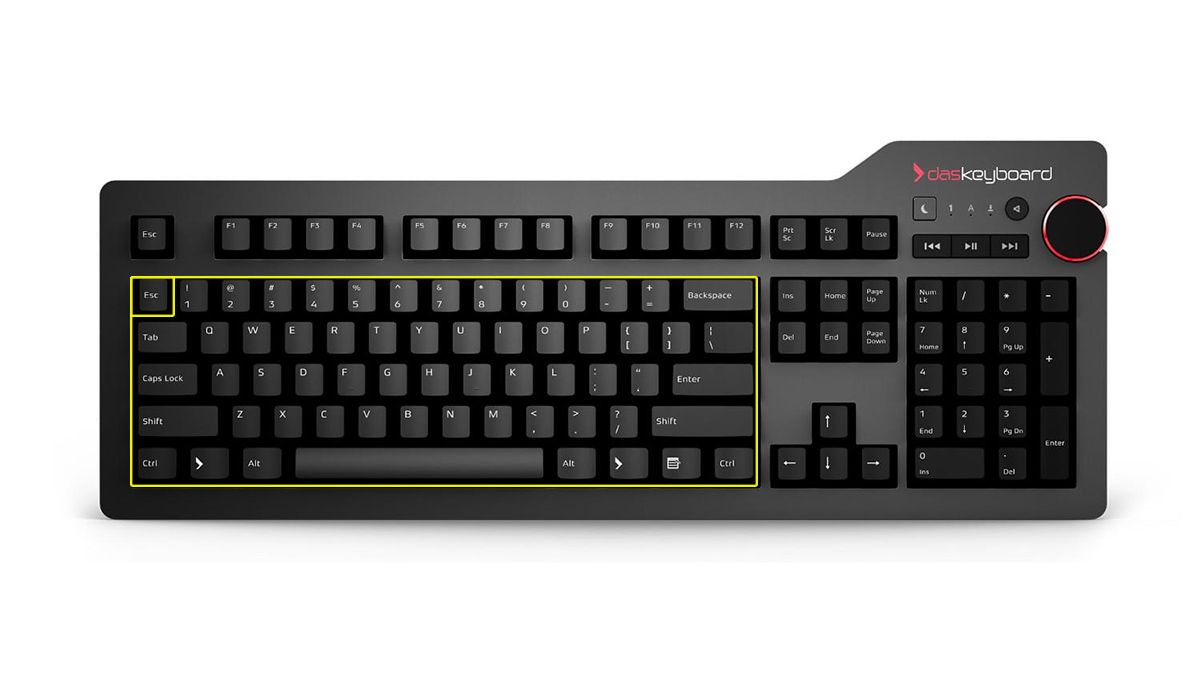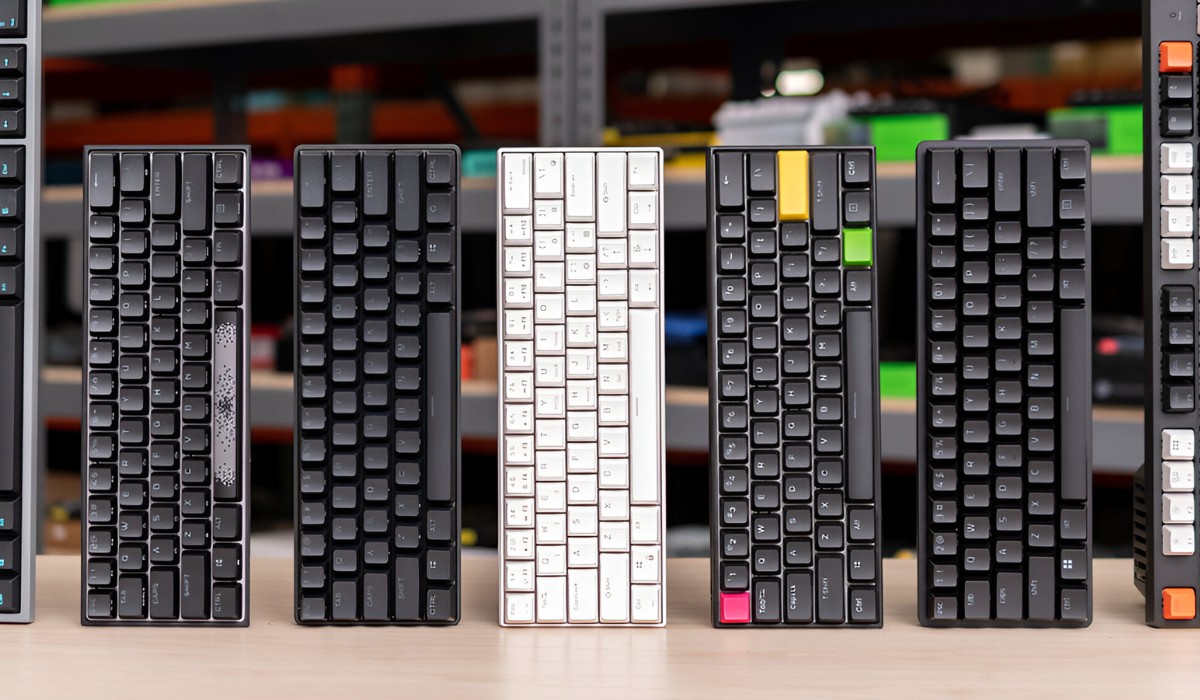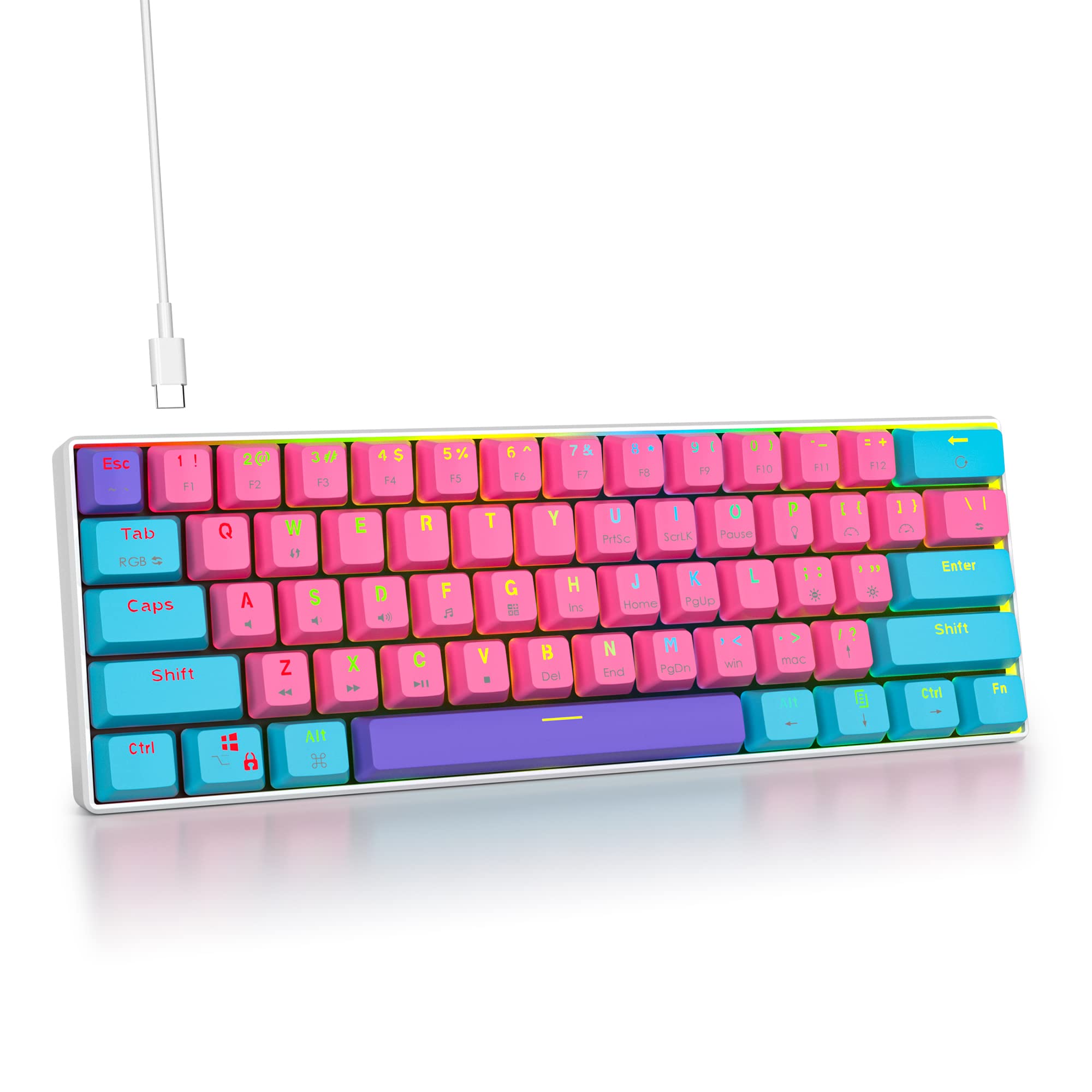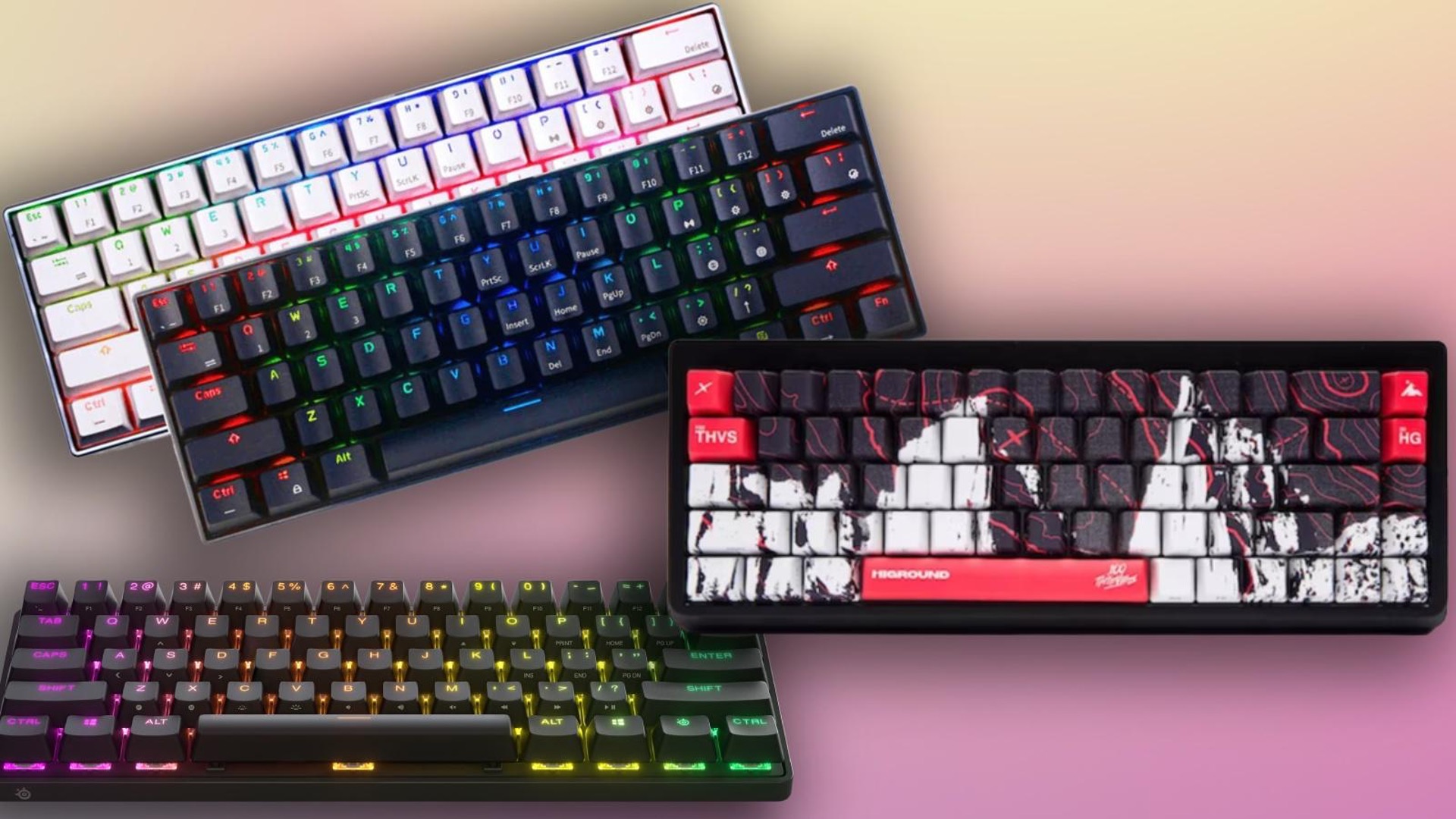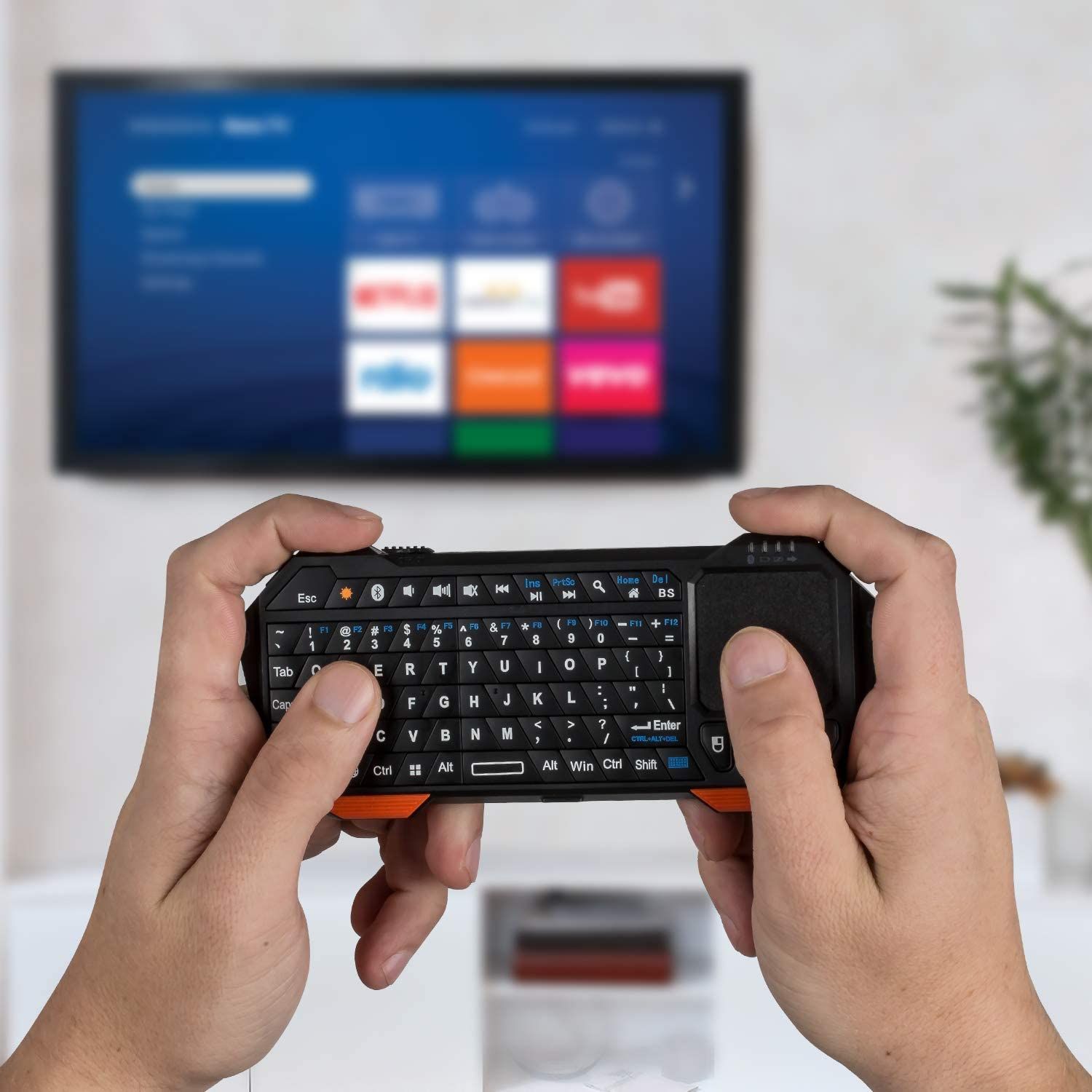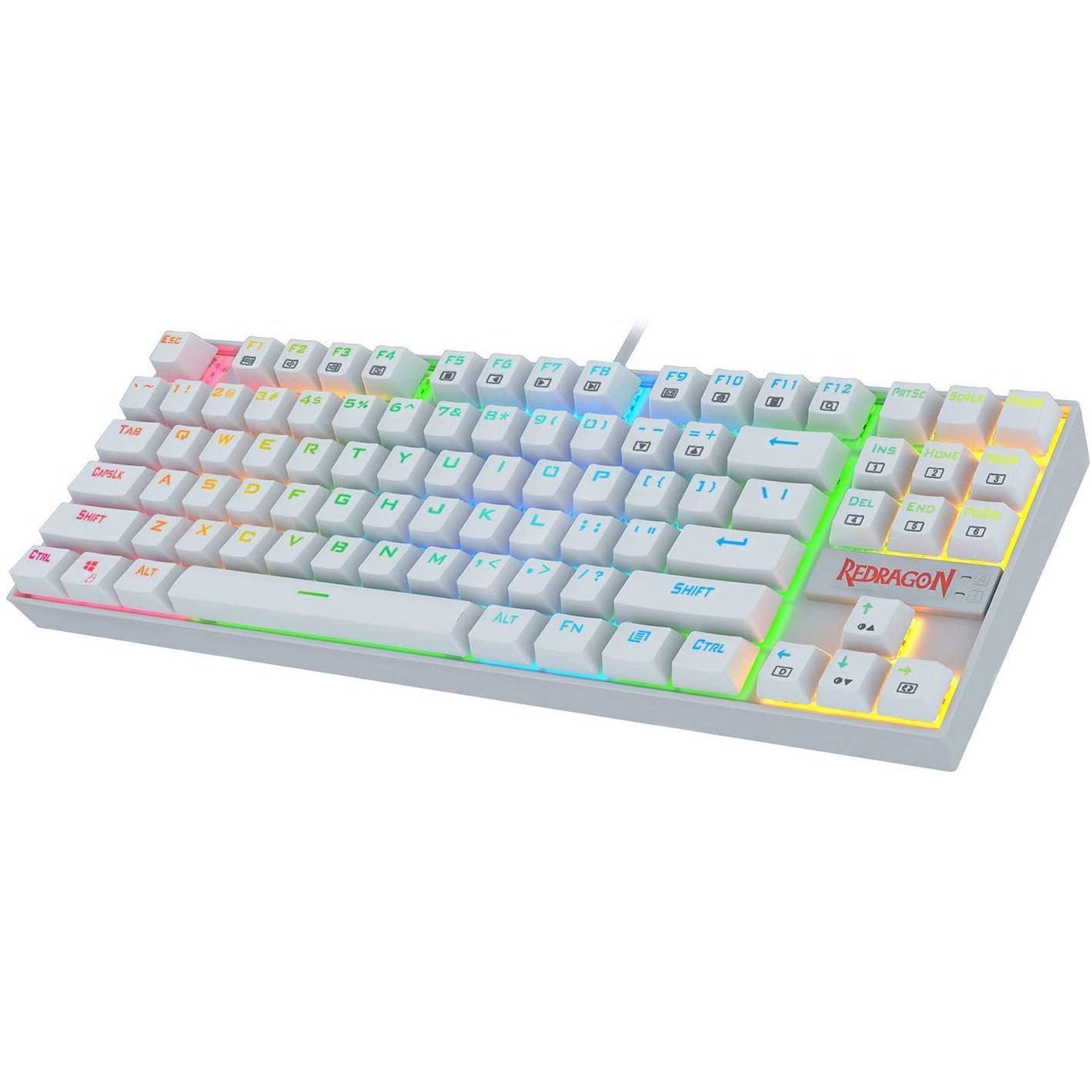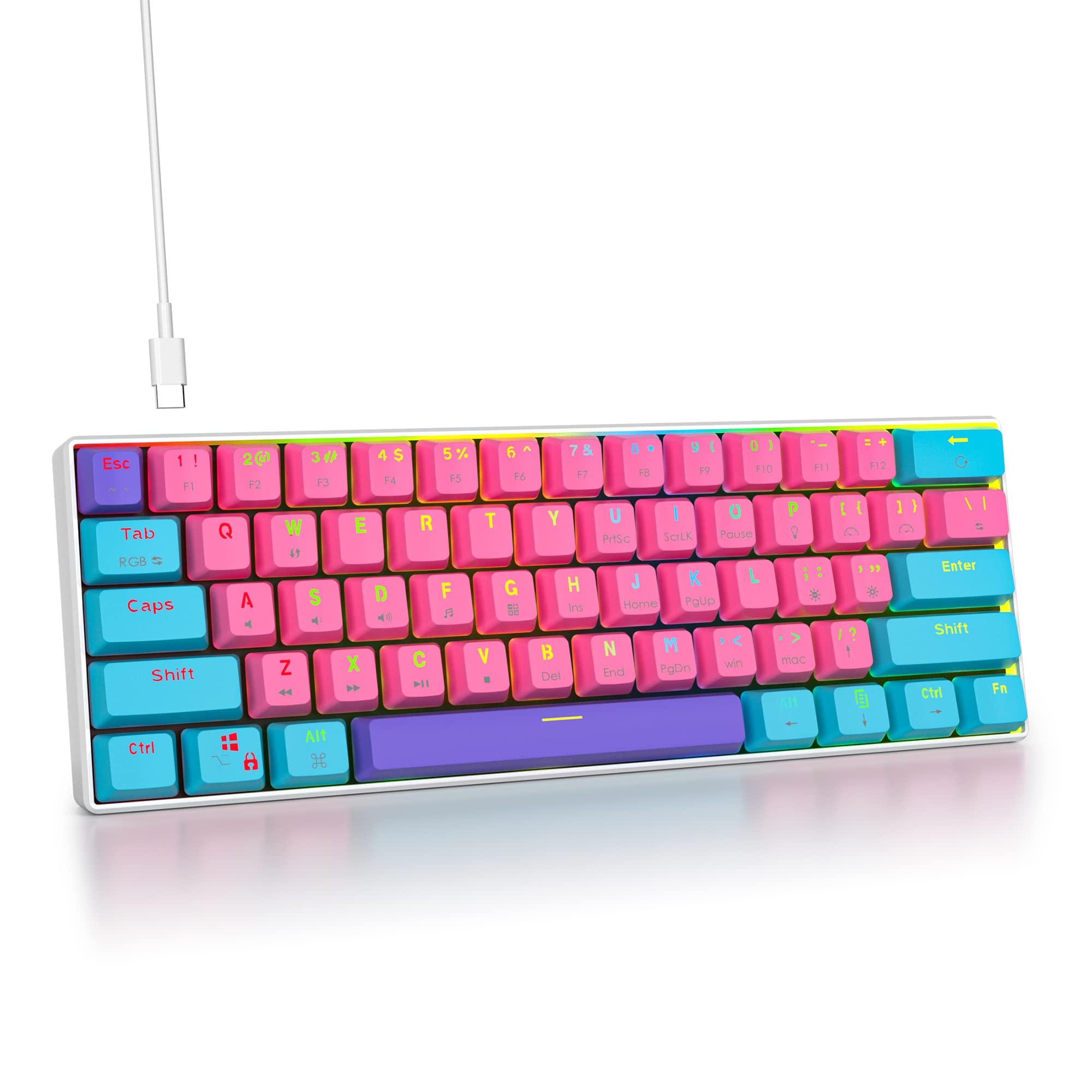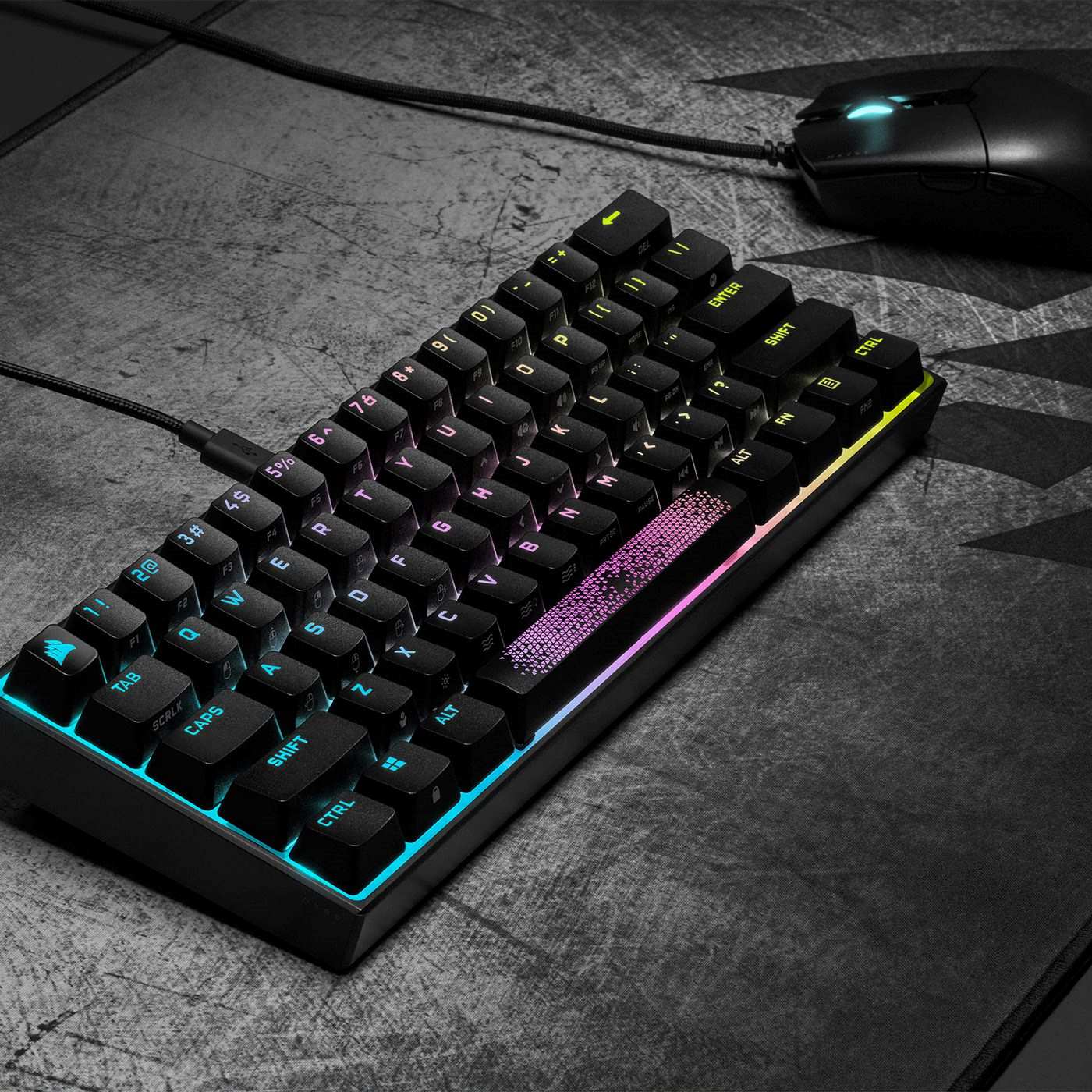Introduction
Are you tired of a cluttered desk filled with a full-sized keyboard? Do you crave a more compact and streamlined typing experience? If so, a 60% keyboard might be the perfect solution for you.
A 60% keyboard is a compact and minimalist keyboard that offers a space-saving design without sacrificing functionality. As the name suggests, it is approximately 60% of the size of a standard full-sized keyboard, making it an ideal choice for those who prioritize efficiency and portability.
This article will delve into the world of 60% keyboards, exploring their key layout, standard keys, additional keys, customization options, and the pros and cons of using them. Whether you’re a gamer, a programmer, or a productivity enthusiast, understanding the features of a 60% keyboard can help you make an informed decision about incorporating it into your setup.
So, let’s dive in and explore the fascinating world of 60% keyboards and discover the benefits they can bring to your typing experience.
What is a 60% keyboard?
A 60% keyboard is a compact mechanical keyboard that retains essential keys while eliminating excess space and unnecessary components. It is designed to provide a minimalistic and efficient typing experience by omitting the number pad, function row, and navigational cluster found on a full-sized keyboard.
The key defining feature of a 60% keyboard is its compact size. With the elimination of non-essential keys, these keyboards are significantly smaller and lighter than traditional ones. This makes them highly portable and suitable for on-the-go use, whether you’re a traveling professional or a gamer participating in LAN parties.
The layout of a 60% keyboard is typically standardized, with key sizes and positioning maintained across different manufacturers. However, customization options are often available, allowing users to personalize their typing experience to suit their preferences and workflow.
One of the notable characteristics of a 60% keyboard is its reliance on function layers. By pressing certain combinations or dedicated function key(s), users can access secondary and tertiary functions of the keys. This feature ensures that essential keys are still present while providing access to additional functionalities, maximizing the available space on the compact design.
While traditional keyboards may be more suitable for heavy number-crunching work or data entry tasks that require a dedicated number pad, 60% keyboards excel in productivity, programming, and gaming scenarios. Their compact size frees up desk space, allowing for more comfortable mouse movement and reducing strain on the user’s wrists and shoulders.
Overall, 60% keyboards offer a balance between compactness and functionality, catering to users who prioritize efficiency, portability, and a clutter-free workspace. With their sleek design and customizable options, they have gained popularity and become an excellent choice for tech enthusiasts and professionals alike.
The key layout of a 60% keyboard
The key layout of a 60% keyboard is designed to prioritize efficiency and compactness while retaining essential keys for a seamless typing experience. Although the exact layout may vary slightly between different manufacturers and models, certain key features are consistent across most 60% keyboards.
At the core of a 60% keyboard layout is a set of alphanumeric keys, including the letters, numbers, and punctuation symbols. These keys are typically arranged in the familiar QWERTY layout, allowing for intuitive typing. Despite the reduced size, the alphanumeric keys are often full-sized, ensuring comfortable and precise key presses.
One notable difference in a 60% keyboard layout is the absence of the number pad typically found on a full-sized keyboard. In its place, the numbers are integrated into the top row of the main alphanumeric keys, using a combination of the “Fn” key and the numbered keys. This arrangement maintains number input functionality while saving space.
Adjacent to the alphanumeric keys, you will typically find a cluster of function keys. These function keys, labeled F1 to F12, are necessary for specific actions and commands in various applications. On a 60% keyboard, the function keys are condensed into a single row above the alphanumeric keys, requiring the “Fn” key to access these secondary functions.
Navigation keys, including arrows and editing keys, are another vital aspect of a keyboard layout. On a 60% keyboard, these keys are often relocated to a secondary layer, accessible through a combination of the “Fn” key and various letter or symbol keys. While this arrangement may take some getting used to, it allows for unhindered typing once familiar with the key combinations.
Additional keys, such as modifier keys (Shift, Control, Alt, and Windows key), are typically positioned in their conventional locations on a 60% keyboard. These keys are essential for executing keyboard shortcuts, modifying the behavior of other keys, and navigating operating systems.
Finally, multimedia and shortcut keys, such as volume control, play/pause, and brightness adjustment, are often integrated into the secondary function layer, enabling quick access to these commonly used functions without compromising precious space on the keyboard.
The key layout of a 60% keyboard strikes a balance between providing the essential keys needed for efficient typing and eliminating non-essential keys to achieve a compact design. While adjusting to the smaller footprint may require a short learning curve, the optimized placement of keys ensures a seamless typing experience once adapted.
The standard keys on a 60% keyboard
Despite its compact form factor, a 60% keyboard manages to retain all the essential keys for a seamless typing experience. While certain keys may be accessed through function layers, the standard keys on a 60% keyboard ensure optimal functionality and convenience.
Let’s take a closer look at the standard keys you can expect to find on a typical 60% keyboard:
- Alphanumeric keys: The alphanumeric keys are the backbone of any keyboard. These keys include the letters A-Z, numbers 0-9, and basic punctuation marks. On a 60% keyboard, these keys are typically full-sized and arranged in the familiar QWERTY layout, ensuring comfortable and intuitive typing.
- Modifier keys: Modifier keys play a crucial role in executing keyboard shortcuts and modifying the behavior of other keys. The Shift, Control, Alt, and Windows key are typically included on a 60% keyboard in their standard locations. These keys allow you to perform tasks such as selecting text, copying and pasting, and launching applications.
- Enter key: The Enter key is essential for confirming inputs and initiating actions. On a 60% keyboard, the size and shape of the Enter key may be slightly modified to accommodate the compact design, but its functionality remains unchanged.
- Backspace key: The Backspace key allows you to delete characters to the left of the cursor, making it crucial for correcting mistakes. Despite the reduced size of a 60% keyboard, the Backspace key is still included and located in its standard position.
- Spacebar: The spacebar is a key used most frequently when typing. It allows you to insert spaces between words and is essential for inputting text. Despite its larger size, the spacebar on a 60% keyboard remains a standard feature, ensuring comfortable and accurate typing.
- Escape key: The Escape key allows users to exit or cancel operations in various scenarios. It is a versatile key used in many applications and is commonly found on a 60% keyboard in its standard location.
These standard keys, along with the alphanumeric keys, modifier keys, Enter key, Backspace key, spacebar, and Escape key, form the foundation of a 60% keyboard. While some secondary and tertiary functions may require the use of function layers, the inclusion of these essential keys ensures that users can perform everyday tasks with ease.
Additional keys on a 60% keyboard
In addition to the standard keys, a 60% keyboard often includes additional keys that provide extra functionality and customization options. While the specific additional keys may differ between different models and manufacturers, there are some common ones you can expect to find on a 60% keyboard.
Let’s explore some of the additional keys commonly found on a 60% keyboard:
- Function key (Fn): The Function key, usually denoted as “Fn,” is a key that serves as a modifier to access secondary and tertiary functions on a 60% keyboard. By pressing the Fn key and another key simultaneously, users can activate specific commands or access additional functionality that may not be present on the primary layer of keys.
- Arrow keys: While the arrow keys are considered standard on most keyboards, they are often relocated to a function layer on a 60% keyboard to save space. Users can access the arrow keys by pressing a combination of specific keys, allowing for navigation and movement in documents, spreadsheets, and other applications.
- Page navigation keys: The page navigation keys include Home, End, Page Up, and Page Down. These keys allow users to quickly move to the beginning or end of a document, navigate through pages, or scroll through content. On a 60% keyboard, these keys are typically accessible through a combination of the Fn key and specific keys.
- Media control keys: Many 60% keyboards feature dedicated media control keys that allow users to adjust volume, play/pause music or videos, and skip tracks. These keys provide convenient access to multimedia functions without the need for a separate media control device or navigating through software interfaces.
- Customizable keys: Some 60% keyboards offer additional keys that can be customized to suit individual preferences and workflow. These programmable keys can be assigned specific functions, macros, or shortcuts through software or onboard programming, providing a personalized touch to the keyboard’s functionality.
The availability and placement of these additional keys may vary depending on the specific model of the 60% keyboard. It is important to check the features and specifications of the keyboard before purchasing to ensure it aligns with your requirements and desired functionality.
Overall, the inclusion of additional keys on a 60% keyboard provides flexibility and customization options, allowing users to tailor their typing experience to their specific needs. Whether it’s accessing secondary functions, navigating documents, or controlling media playback, these additional keys enhance productivity and convenience.
Customization options for a 60% keyboard
One of the key advantages of a 60% keyboard is its versatility and the ability to customize various aspects according to individual preferences. From keycaps to programmability, there are several customization options available for users to personalize their 60% keyboard.
Let’s explore some of the common customization options for a 60% keyboard:
- Keycaps: Keycaps are the removable covers that fit over the switches on a keyboard. They not only protect the switches but also determine the look and feel of the keyboard. With a 60% keyboard, keycaps are often standard-sized and compatible with most keycap sets. Some users may opt to replace the default keycaps with ones that feature different colors, materials, or designs to suit their aesthetic preferences.
- Switches: Switches are the mechanical components beneath the keycaps that register key presses. 60% keyboards usually feature removable switches, making it possible to swap them out for different types or brands of switches. Whether it’s tactile, linear, or clicky switches, users have the flexibility to choose the ones that offer the desired typing experience, sound, and actuation force.
- Backlighting: Many 60% keyboards come with backlighting options, allowing users to customize the color and intensity of the keyboard’s backlight. Backlighting not only enhances the visual appeal of the keyboard but also provides better visibility in low-light environments. Users can configure the backlight settings to their preference, choosing from a spectrum of colors or even opting for dynamic lighting effects.
- Programmability: Customization doesn’t end with the physical aspects of the keyboard. 60% keyboards often offer programmability, allowing users to remap keys, create macros, and assign custom functions to specific key combinations. This feature enables users to tailor their keyboard layout and functionality to their specific needs, optimizing productivity and workflow.
- Software integration: Some 60% keyboards have companion software that provides additional customization options. This software allows users to configure advanced settings, create and manage profiles, and synchronize lighting effects. Having software integration adds an extra layer of control and customization to the keyboard.
These customization options empower users to create a unique and personalized typing experience with their 60% keyboard. Whether it’s selecting the right keycaps and switches, adjusting backlighting, or programming custom macros, customization options allow users to tailor their keyboard to suit their preferences and enhance their productivity.
Pros and cons of using a 60% keyboard
Using a 60% keyboard offers several advantages, but it also comes with a few considerations. Understanding the pros and cons can help you make an informed decision about whether a 60% keyboard is the right choice for your needs.
Let’s explore the pros and cons of using a 60% keyboard:
Pros:
- Compact and portable: The primary advantage of a 60% keyboard is its compact size, which saves valuable desk space and makes it highly portable. It is an ideal choice for those who want a clutter-free workspace and need a keyboard they can easily carry with them.
- Ergonomic design: The reduced size of a 60% keyboard allows for a more ergonomic typing experience. It allows users to keep their mouse closer to the keyboard, reducing strain on the wrists and shoulders and promoting a more comfortable and natural posture.
- Improved efficiency: The elimination of non-essential keys on a 60% keyboard encourages efficient typing by minimizing reach and reducing finger movement. This can lead to increased typing speed and accuracy, enhancing productivity in tasks that require extensive typing.
- Customization options: Many 60% keyboards offer various customization options, such as interchangeable keycaps, switch choices, backlighting, and programmability. These options allow users to personalize their keyboard to suit their aesthetic preferences and optimize functionality.
- Non-distracting layout: The absence of certain keys, such as the number pad and function row, can contribute to a less cluttered and non-distracting layout. This may be beneficial for individuals who prefer a minimalist design or tend to get overwhelmed by unnecessary keys and features.
Cons:
- Learning curve: Transitioning to a 60% keyboard may require a short learning curve, especially if you are accustomed to the layout and positioning of keys on a full-sized keyboard. Adjusting to function layers and accessing secondary functions through key combinations may take some time to become comfortable with.
- Reduced functionality: The main drawback of a 60% keyboard is the reduced number of keys compared to a full-sized keyboard. While most essential keys are still present, functions like dedicated number pads, navigation clusters, and media control keys may require accessing through function layers or sacrificing dedicated keys.
- Limited compatibility: Due to the unique layout and size of a 60% keyboard, finding compatible keycap sets or alternative keycap options may be more challenging compared to standard-sized keyboards. This can limit the potential for customization when it comes to keycaps.
- Specialized use: While a 60% keyboard is versatile enough for most tasks, it may not be the ideal choice for professionals who rely heavily on number entry, data input, or require a wide array of dedicated function keys. Specialized work or specific software requirements may necessitate a larger keyboard with more dedicated keys.
Considering these pros and cons can help you determine if a 60% keyboard aligns with your needs and preferences. It’s important to evaluate your typing habits, workflow, and the tasks you frequently perform to make an informed decision about the type of keyboard that will best suit your requirements.
Conclusion
After exploring the world of 60% keyboards, it’s clear that they offer a compelling combination of compactness and functionality. With their space-saving design, ergonomic advantages, and customizable options, 60% keyboards have gained popularity among tech enthusiasts, gamers, and productivity enthusiasts.
The key layout of a 60% keyboard strikes a balance between providing essential keys for efficient typing and eliminating non-essential keys to achieve a compact design. While adjusting to the smaller footprint may require a short learning curve, the optimized placement of keys ensures a seamless typing experience once adapted.
Additional keys and customization options on a 60% keyboard provide flexibility and personalized touches. From function layers to programmable keys, users can tailor their keyboard to suit their preferences and optimize their productivity. Moreover, the compact and portable nature of 60% keyboards makes them a great choice for those who are constantly on the go or have limited desk space.
However, it’s important to consider the potential drawbacks of using a 60% keyboard. The reduced number of keys and the need for function layers means sacrificing some dedicated functionality that larger keyboards offer. Customization options for keycaps may also be more limited compared to standard-sized keyboards. Specialized tasks or software requirements may also call for a more extensive keyboard layout.
In the end, the decision to use a 60% keyboard depends on individual preferences, typing habits, and specific needs. If space-saving design, portability, and customization are important to you, a 60% keyboard may be an excellent choice. However, if you heavily rely on number entry or require an extensive array of dedicated keys, a larger keyboard may better suit your requirements.
Regardless of your choice, a 60% keyboard opens up a world of streamlined and efficient typing, allowing you to maximize productivity and enhance your overall typing experience.







